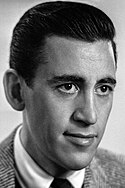J.D. Salinger Quote
You can say the Jesus Prayer from now till doomsday, but if you don't realize that the only thing that counts in the religious life is detachment, I don't see how you ever move an inch. Detachment, buddy, and only detachment. Desirelessness. 'Cessations from all hankerings.' It's this business of desiring, if you want to know the goddam truth, that makes an actor in the first place. Why're you making me tell you things you already know? Somewhere along the line - in one damn incarnation or another, if you like - you not only had a hankering to be an actor or an actress but to be a good one. You're stuck with it now. You can't just walk out on the results of your own hankerings. Cause and effect, buddy, cause and effect. The only thing you can do now, the only religious thing you can do, is act. Act for God, if you want to - be God's actress, if you want to. What could be prettier?
You can say the Jesus Prayer from now till doomsday, but if you don't realize that the only thing that counts in the religious life is detachment, I don't see how you ever move an inch. Detachment, buddy, and only detachment. Desirelessness. 'Cessations from all hankerings.' It's this business of desiring, if you want to know the goddam truth, that makes an actor in the first place. Why're you making me tell you things you already know? Somewhere along the line - in one damn incarnation or another, if you like - you not only had a hankering to be an actor or an actress but to be a good one. You're stuck with it now. You can't just walk out on the results of your own hankerings. Cause and effect, buddy, cause and effect. The only thing you can do now, the only religious thing you can do, is act. Act for God, if you want to - be God's actress, if you want to. What could be prettier?
Related Quotes
About J.D. Salinger
The Catcher in the Rye (1951) was an immediate popular success; Salinger's depiction of adolescent alienation and loss of innocence was influential, especially among adolescent readers. The novel was widely read and controversial, and its success led to public attention and scrutiny. Salinger became reclusive, publishing less frequently. He followed Catcher with a short story collection, Nine Stories (1953); Franny and Zooey (1961), a volume containing a novella and a short story; and a volume containing two novellas, Raise High the Roof Beam, Carpenters and Seymour: An Introduction (1963). Salinger's last published work, the novella Hapworth 16, 1924, appeared in The New Yorker on June 19, 1965.
Afterward, Salinger struggled with unwanted attention, including a legal battle in the 1980s with biographer Ian Hamilton and the release in the late 1990s of memoirs written by two people close to him: Joyce Maynard, an ex-lover; and his daughter, Margaret Salinger.
